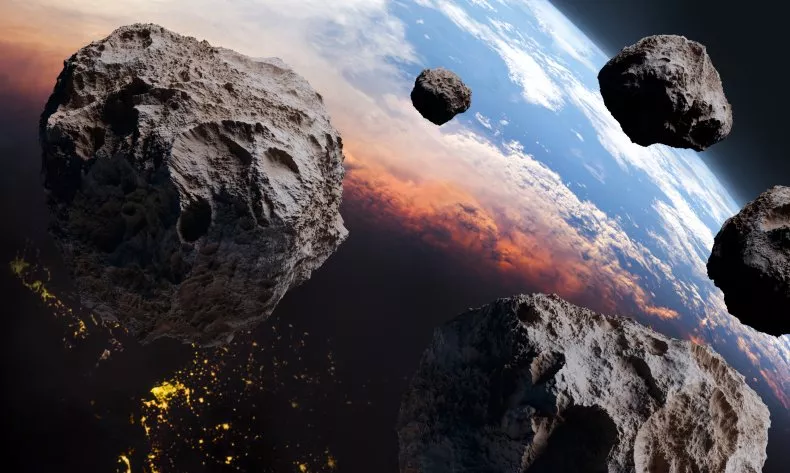NASA’s Jet Propulsion Laboratory (JPL) is actively monitoring three asteroids as they make close approaches to Earth. These space rocks are traveling at incredible speeds, ranging from approximately 8,000 to 15,000 miles per hour.
While their proximity might seem concerning, NASA assures the public that all three asteroids are safely passing our planet.
Key Asteroids and Their Closest Approaches
Details of the three asteroids and their trajectories.
The Largest: 424482 (2008 DG5)
The most substantial of these celestial visitors is designated “424482 (2008 DG5).” This space rock measures an impressive 1,300 feet in diameter. Later today, it is projected to zip past Earth at a speed exceeding 13,800 miles per hour. According to NASA’s JPL, its closest approach is expected to be approximately 2.17 million miles from Earth. This distance is considered safe for our planet.
Smaller, Faster Visitors: 2025 LD and 2025 KY4
Earlier today, two smaller asteroids also made their closest approaches. The asteroid known as “2025 LD,” which is about 73 feet in diameter, zoomed past Earth at a speed over 15,000 miles per hour. This space rock came within approximately 696,000 miles of our planet, according to the JPL’s Center for Near-Earth Object Studies (CNEOS).
A third asteroid, named “2025 KY4,” measuring around 42 feet in diameter, also passed Earth earlier today. It reached a distance of approximately 1.72 million miles from our planet. This asteroid moved at a speed exceeding 8,000 miles per hour.
Understanding Asteroids and NASA’s Monitoring Efforts
Asteroids provide valuable insights into our solar system’s origins, and NASA maintains vigilance over those that come near Earth.
Remnants of Solar System Formation
Asteroids are small, rocky masses. They are essentially leftovers from the formation of our solar system, which occurred nearly 4.6 billion years ago. Most asteroids are found within the main asteroid belt. This region is located between the orbits of Mars and Jupiter, where they continuously orbit the sun.
Near-Earth Objects (NEOs) Defined
Near-Earth objects (NEOs) are asteroids whose orbits bring them within 120 million miles of the sun. The majority of these NEOs range in size from about 10 feet to almost 25 miles across. NASA emphasizes that “The majority of near-Earth objects have orbits that don’t bring them very close to Earth, and therefore pose no risk of impact.”
Potentially Hazardous Asteroids (PHAs)
A small subset of NEOs, known as potentially hazardous asteroids (PHAs), warrant closer attention from scientists. These PHAs are generally around 460 feet in diameter or larger. Their orbits bring them within approximately 4.6 million miles of Earth’s orbit around the sun. NASA continuously monitors these objects to assess any potential risks.
Reassessing Asteroid Impact Probabilities: The Case of 2024 YR4
NASA’s ongoing monitoring includes re-evaluating the impact probabilities of newly discovered asteroids.
Initial Concerns and Revised Data
In February 2025, data from CNEOS revealed an initial impact probability of 3.1 percent for an asteroid designated “2024 YR4” in 2032. NASA noted at the time that this was “the highest impact probability NASA has ever recorded for an object of this size or larger.” However, further studies conducted later that month significantly reduced the chance of 2024 YR4 impacting Earth on December 22, 2032, to a mere 0.004 percent.
No Significant Threat to Earth
Subsequent analysis confirmed that there is “no significant potential” for 2024 YR4 to “impact our planet for the next century,” as stated by NASA in a blog post on February 24. The data clearly showed that “the range of possible locations the asteroid could be on Dec. 22, 2032, has moved farther away from the Earth.”
The asteroid 2024 YR4 was measured by NASA’s James Webb Space Telescope to be approximately 200 feet across, as noted by Andy Rivkin, an astronomer at the Johns Hopkins University Applied Physics Laboratory, in an April 2 NASA blog post. While the threat to Earth has been effectively ruled out, the space agency still notes a “very small chance,” currently at 1.7 percent, for 2024 YR4 to impact the Moon on that date.







